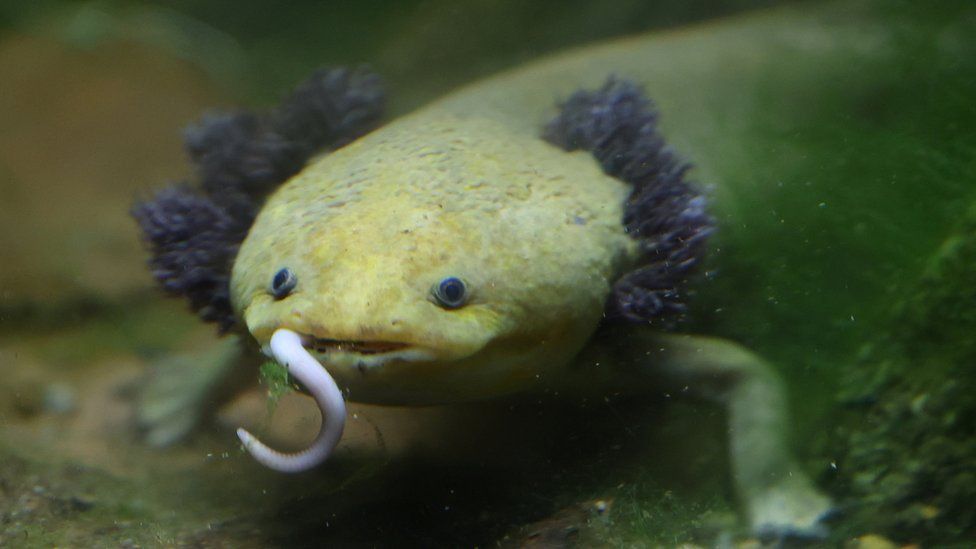London Zoo: New amphibian display has rare and unusual species
- Published

Giant salamanders and some of the world's largest frogs and turtles are among the creatures with a new home at London Zoo.
The Secret Life of Reptiles and Amphibians exhibit opens on 29 March.
It will house more than 30 species, some which are highly unusual and endangered.
The zoo supports their conservation, captive breeding programme, the Zoological Society of London (ZSL) said.
Visitors will be able to see the zoo's group of mountain chicken frogs, which were airlifted to safety from their Caribbean home in 2009 in a last-ditch bid to save the species from extinction due to a killer fungus.
They are kept in a bio-secure unit to protect them from disease, with sterilised soil and plants dipped in dilute bleach solution, before being placed in the enclosure and staff changing their clothes before working with them.
Also among the residents of the exhibit are two Chinese giant salamanders, the world's largest amphibians, which were rescued from being smuggled in a cereal box in 2016, before coming to live in the zoo.
It is hoped the critically endangered pair will breed as the keepers say it is likely they are a male and female.
Some 16 of the creatures in the exhibit are "Edge" species meaning they have few evolutionary relatives and are often extremely unusual in their genetic make-up and the way they look, live and behave.
They include the crocodile lizard, which has no more that 1,000 individuals in the wild in southern China and northern Vietnam, and the big-headed turtle - which, as the name suggests, has a large head that cannot retract into its shell.
Four adult big-headed turtles came to the zoo in 2018, having been confiscated after being smuggled in Canada, and seven youngsters were born in 2021, making London Zoo the first European zoo to breed them.
Amphibian and reptile species are threatened by habitat loss and being caught for meat and the pet trade, while amphibians in particular are at risk from disease such as chytrid fungus which all but wiped out mountain chicken frogs.
The team at ZSL says having animals in their care means they are able to research and learn about their lives and behaviour in ways that can help their survival in the wild.
For example, they are carrying out analysis of their Ethiopian mountain adders to see if the patterns on the snakes are stable, and if so could be used as identifiers of individual snakes which would support monitoring and conservation in the wild.
The secret life of reptiles and amphibians building has been designed to meet the needs of each of its 33 species, with different climate-controlled zones, and staff checking temperatures, water quality and humidity on a daily basis.
Listen to the best of BBC Radio London on Sounds and follow BBC London on Facebook, X and Instagram. Send your story ideas to hello.bbclondon@bbc.co.uk
Related Topics
- Published14 February
- Published3 January
- Published7 March